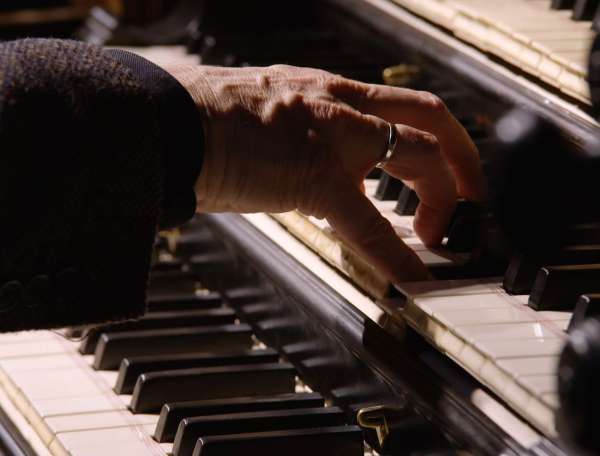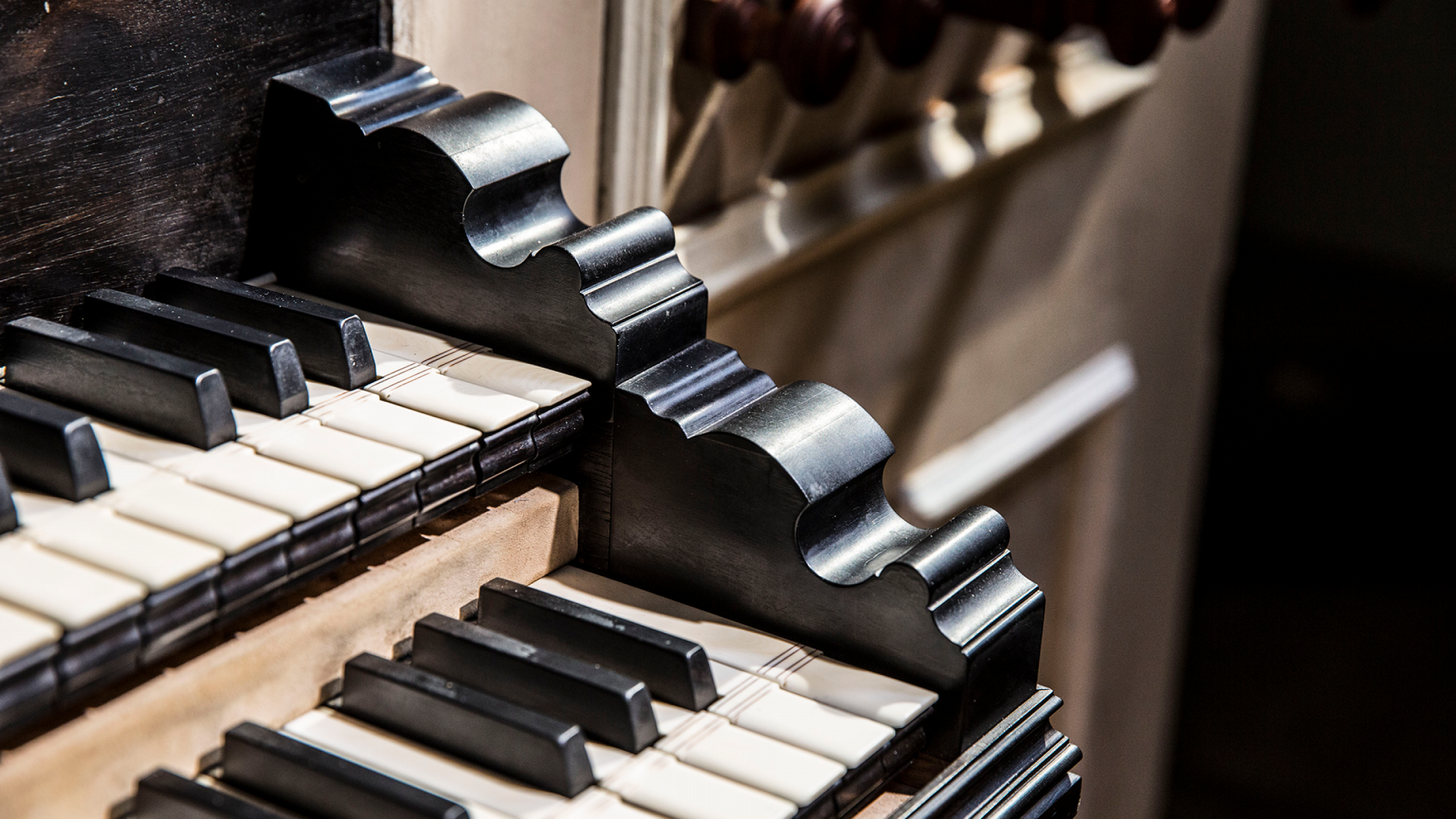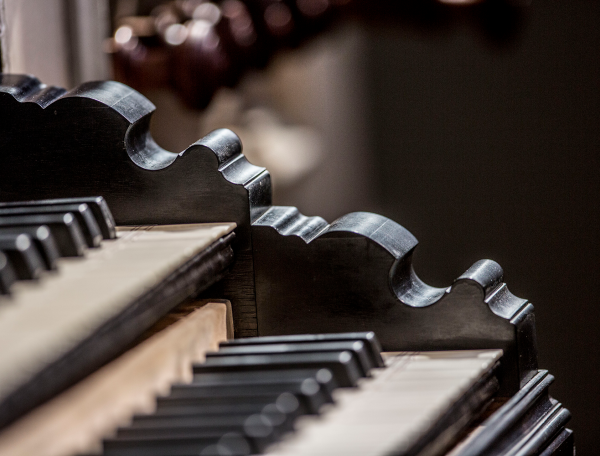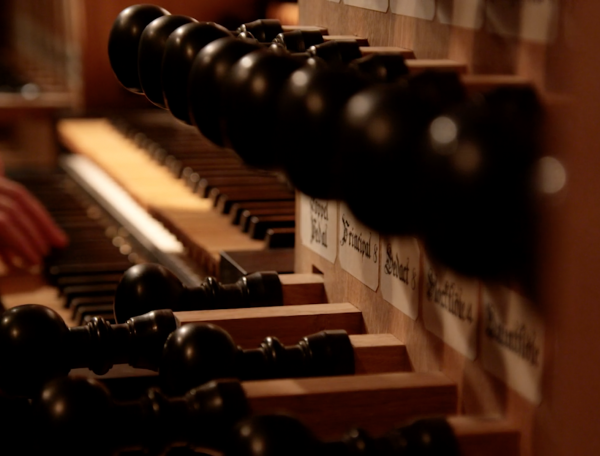

Vater unser im Himmelreich
BWV 683 performed by Leo van Doeselaar
Walloon Church, Amsterdam
Behind the music
An odd couple
A complex, resounding 'Our Father' is followed by a dreamy prayer
After the ‘canonic stranglehold’ of BWV 682 (Bach’s great chorale arrangement of the Vater unser im Himmelreich with pedal), this little work using the same melody is like a fresh breeze. Without any frills or interruptions, the song is heard in the upper part, accompanied by ascending and descending motifs and sustained notes, which thus form a clear chord scheme. All in all, it is a very ‘classical’ approach that resembles that of the much older Orgelbüchlein. This seems in keeping with the idea that this arrangement dates from as early as the Weimar period and that Bach went back to it in 1739 when collecting chorale arrangements for the third part of his Clavier-Übung.
The runs may originate in the melody to ‘und willst das beten von uns hab’n’ (you wish us to pray), and indeed the music exudes an atmosphere of attention and reflection in all its straightforward simplicity.
Clavier-Übung
In Leipzig, between 1731 and 1741, Bach published four parts of Clavier-Übung, a title used previously by Johann Kuhnau, his predecessor as cantor at the Thomasschule, for similar collections of works for organ and harpsichord. The compositions are very varied in nature and, although the title suggests otherwise, were difficult to play. Bach addresses all the styles, genres and techniques for harpsichord and organ that were prevalent at the time, but then in the superior form to which only he had the patent.
Clavier-Übung I (1731) contains the six partitas, BWV 825-830; Clavier-Übung II (1735) the Concerto nach italienischen Gusto, BWV 971 and the Ouverture nach französischer Art, BWV 831; and Clavier-Übung IV (1741) the Goldberg Variations, BWV 988. The largest part, Clavier-Übung III (1739), is the only one devoted to organ, containing mostly chorale arrangements, or organ preludes based on Lutheran hymns. Bach made two versions of each chorale: one for great organ and one for a smaller type of organ. Most of the chorales refer to the six parts of the catechism. It is unclear whether Bach also played them during the services, or whether he developed his musical ideas in them for his own use, with no intention of performing them in public.
- BWV
- 683
- Title
- Vater unser im Himmelreich
- Instrument
- organ
- Genre
- organ works
- Serie
- Clavier-Übung III
- Year
- published in 1739
- City
- Weimar?/Leipzig
- Special notes
- The arrangement based on this chorale, BWV 683a, is not by Bach himself, as the quality of the piece is not high enough.
Extra videos
Vocal texts
Original
Translation
Credits
-
- Release date
- 17 April 2015
-
- Recording date
- 23 June 2014
-
- Location
- Walloon Church, Amsterdam
-
- Organist
- Leo van Doeselaar
-
- Organ
- Christian Müller, 1734
-
- Producer
- Frank van der Weij
-
- Film director
- Jan Van den Bossche
-
- Directors of photography
- Sal Kroonenberg, Ruben van den Broeke
-
- Grip
- Antoine Petiet
-
- Music production, editing and mix
- Holger Schlegel
-
- Film editor
- Dylan Glyn Jones
-
- Colorist
- Jef Grosfeld
-
- Production assistants
- Marco Meijdam, Zoë de Wilde
Discover
Help us to complete All of Bach
There are still many recordings to be made before the whole of Bach’s oeuvre is online. And we can’t complete the task without the financial support of our patrons. Please help us to complete the musical heritage of Bach, by supporting us with a donation!

